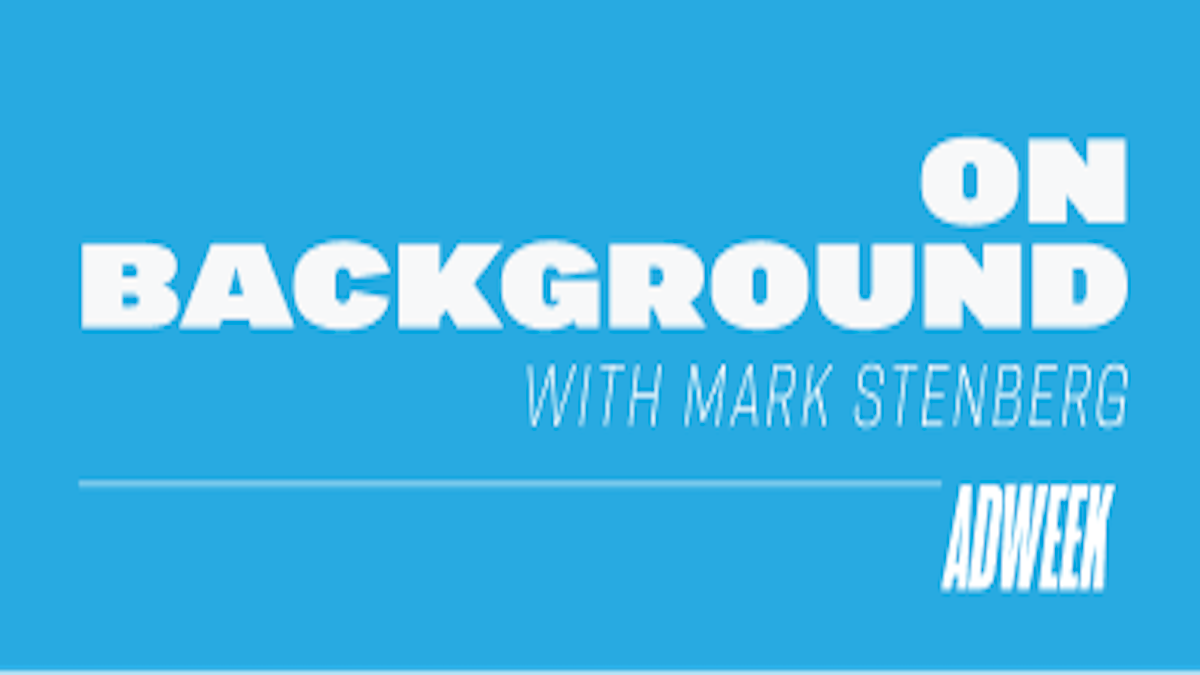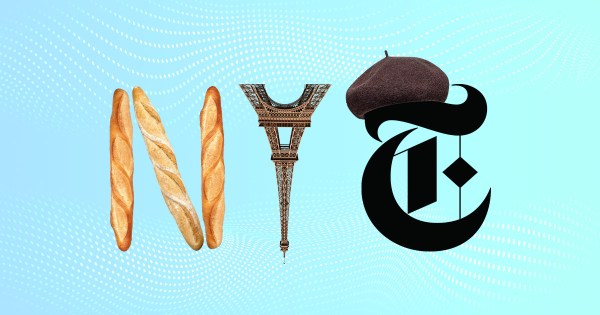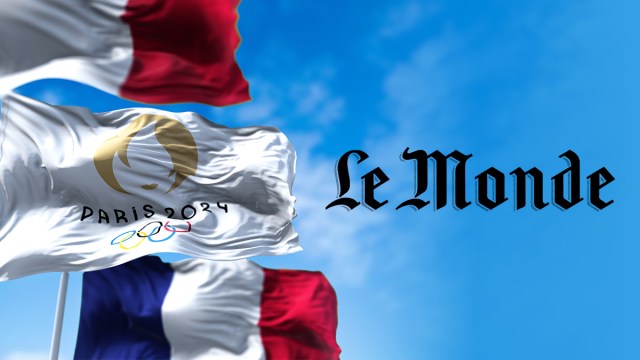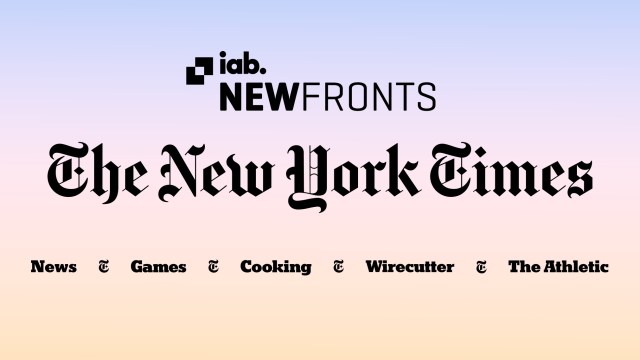On Tuesday, the French news publisher Le Monde launched a cross-offer initiative with The New York Times, an arrangement that will allow Le Monde—as well as its sister publications Courrier International and Le Nouvel Obs—to offer their subscribers a one-year New York Times subscription for no additional cost.
The deal is not a partnership, per se. The bundle will not be available to all Le Monde readers; instead, the French outlet will selectively present it to those with a high propensity to respond to it, such as readers who engage with the international section, according to Le Monde’s chief digital operations officer Lou Grasser. It also only goes one way: The New York Times will not be offering its readers an opportunity to subscribe to Le Monde.
“We have seen encouraging results from other bundles, but this is fundamentally a test,” Grasser said. “The philosophy is the same that guides our deals with OpenAI and Perplexity, in that the faster we go with testing the sooner we will know what works.”
FOR Scoops, Sharp Analysis, and Insider Context

By submitting your email, you agree to our Terms of Use and Privacy Policy . You may opt-out anytime by clicking ‘unsubscribe’ from the newsletter or from your account.
Subscribe
Loading…
The bundle includes The New York Times’ full digital subscription, which includes products like Cooking and Games. It is also meant to complement Le Monde in English, a translated version of Le Monde that the publisher debuted in 2022, to entice European readers who do not speak French.
For Le Monde, the initiative is part of a larger effort to scale its subscription business. The French news publisher, the largest in the country, now has 665,000 total subscribers, 600,000 of which are digital-only, according to Grasser. (Le Monde in English has brought in around 13,000 subscribers, Grasser said, a fraction of the 150,000 English-speaking customers it had set as its 2025 goal.)
More broadly, the outlet had set for itself the ambitious goal of netting 1 million subscribers by 2025, a mark that it is also bound to miss. But it continues to work diligently toward its stated aim, and has made ample use of innovative partnerships to do so, including tie-ups with Spotify and HBO in the last year.
Overall, Le Monde Group generated €310 million ($360 million) in 2024, roughly half of which, around €150 million, came from Le Monde alone, according to Grasser. Subscriptions accounted for approximately 50% of that business, or around €75 million, which breaks down further into digital (35%) and print (15%). By the end of 2025, Le Monde anticipates generating around €70 million ($81 million) from digital subscribers, a growth of 33%.
For The Times, the initiative accomplishes several objectives. It nets it a cut of the generated revenue, for one. But more critically, it provides the news publisher, which itself aims to have 15 million subscribers by 2027, a valuable source of data about the international appetite for its subscription product. It also gains access to this data at virtually no cost, as the structure of the Le Monde deal does not require The Times to manage the infrastructure of the bundle.
“This provides The New York Times with exposure to a new market without any customer acquisition cost,” according to Felix Danczak, a subscription marketing analyst who is now head of AI and growth at venture firm Pembroke VCT. “They also get behavioral and engagement data on international readers for free, which will tell them whether or not it makes sense to do this expansion elsewhere.”
Indeed, the tie-up with Le Monde is not the first such arrangement the Gray Lady has inked.
Last fall, four European news publishers—El País (Spain), Politiken (Denmark), the Irish Times (Ireland), and Corriere della Sera (Italy)—sweetened their subscription deals by offering complimentary access to The New York Times. The Times has these deals with more than 20 publishers, according to Nieman Lab.
The tie-ups are part of a broader strategy for the publisher, which in March 2022 set itself the goal of becoming “the essential subscription for every curious, English-speaking person seeking to understand and engage with the world.”
All the news that’s translated to print
Lately, even a goal as lofty as serving “every curious, English-speaking person” has begun to feel limited.
Crucially, instantaneous language translation has become more widespread. The technology has been gradually improving for years, and AI has only accelerated that rate of growth.
Le Monde in English, for instance, became economically feasible only because AI could do the bulk of the translation work (although the final copy is reviewed by a team of editors), according to the company, which is majority owned by French billionaire Xavier Niel. (Niel is also an investor in several AI startups.)
So far, The Times’ forays into international markets have come in the form of untranslated products. Enough people speak English worldwide that it has not yet been a materially limiting factor.
But with nearly costless translation now readily accessible, The Times could soon begin to evolve its international expansion strategy, offering its product in consumers’ native language and dramatically increasing its total addressable market, according to Danczak.
A spokesperson for The New York Times declined to comment.
The company has also faced pressure from activist investors to increase its use of the technology. In August, investment firm Fivespan announced it had built up a position in The Times, pushing the publisher to more aggressively embrace AI. Fivespan founders Dylan Haggart and Sarah Coyne pointed to AI-enabled translation as a key growth accelerant that The Times has left underutilized.
“AI is a clear tailwind for The New York Times,” Fivespan said in a letter obtained by Bloomberg in August. “Our work shows it can more than double the company’s long-term revenue and profit potential: enhancing growth by reaching broader audiences, converting more readers into paying subscribers, and unlocking new, lucrative profit pools.”
If The Times believes it can generate 15 million English-speaking subscribers by the end of next year, imagine how much larger its potential market could be once language is no longer a barrier, Danczak said. Translation, properly handled, could dramatically balloon The Times’ subscriber base, transforming its business into a truly international resource.
The benefits extend even beyond subscribers. Translation renders not only new reporting more valuable, but archival content as well, according to Jeff Kaloski, managing director and partner at L.E.K. Consulting.
A similar phenomenon is playing out right now in the entertainment industry, Kaloski said. Backlogs of content going back decades—more than a century in some cases—can now be localized at next to no cost, unlocking intellectual property that was once cost-prohibitive to translate.
As AI firms work to secure licensing deals with trusted information providers, The Times’ ability to translate its archive into other languages could make its data exponentially more valuable. Rather than limit its utility to English-based queries, Times content could be used to inform answers in any language, according to Danczak.
Of course, this all remains hypothetical at the moment.
The Times, alongside Le Monde and others, has moved slowly in its embrace of AI-enabled translation in order to ensure that its quality of reporting does not suffer. Automated translation tools still produce errors particularly in less-popular languages, and competitors that have moved more quickly, like Bloomberg, have hit snags trying to inject AI-generated summaries and localization into their coverage.
For The Times to be “the essential subscription” for the non-English speaking world, it will first need to be trusted in other languages.



